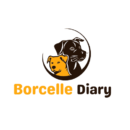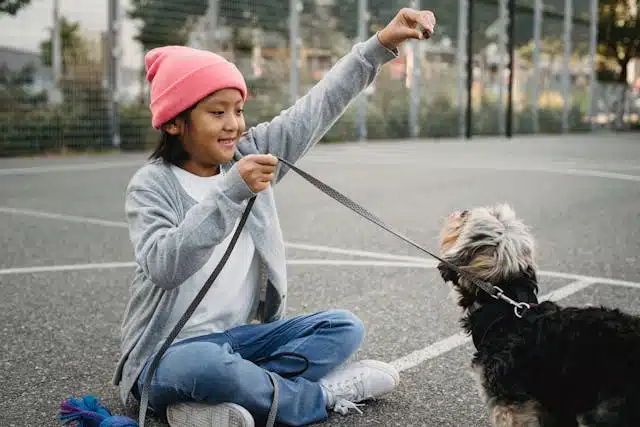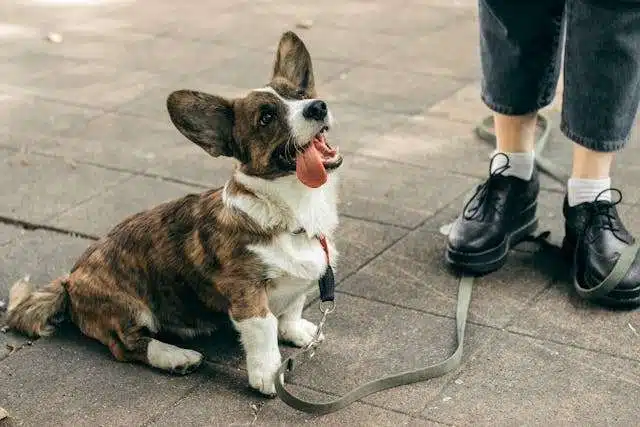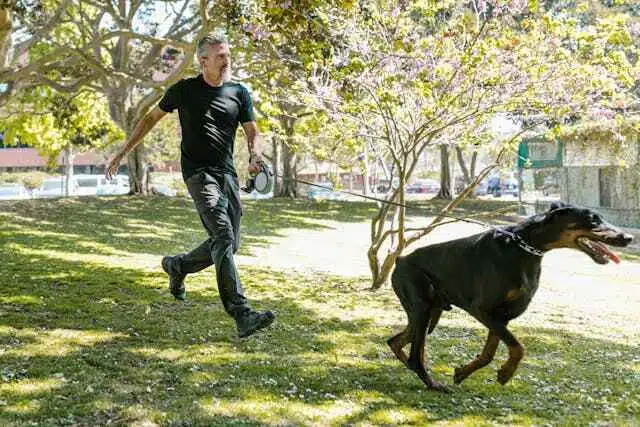Puppy training tips are essential for a successful start. The excitement of bringing home a new puppy comes with its own set of challenges, especially when it comes to training. Whether you’re a first-time puppy parent or adding a new furry member to your family, proper training is essential for fostering a strong bond and ensuring a well-behaved canine companion. This article will provide you with 10 indispensable tips to help you navigate the training process and ensure the success of your new puppy.
Table of Contents
Toggle1. Starting Early
Start early. Right when you first get your new dog or puppy, even though you might not start obedience cues like sit, down, and heel right off the bat, you’re training every single day with your puppy. It’s all about learning the new routine, such as where the food is, where the bed is, and how to cross the thresholds and do physical activities throughout the day.
Now, a lot of people who rescue dogs immediately think, “I want to go ahead and send it away to a trainer,” but those first two or three weeks are really crucial to your relationship building. So don’t get a knee-jerk reaction like sending your dog to a trainer right away. For the first few weeks, they’ll bond with the trainer and work well with him, so you can get through the getting-to-know-you phase and start building a bond.
2. Stay Consistent
Consistency is very important, not just for clear communication but also so that your new dog gets used to the routine and trusts the process. It builds predictability for your dog. Now, I don’t just mean consistency with the entire family, but I also mean with anyone else who comes to interact with your dog as well. As an example of why consistency is important, you might hire a dog walker to walk your dog while you are at work during the day.
If you’ve been working hard to build in a “yes” marker, which means you did exactly what I wanted you to do, and now your reward, your treat, your reinforcer, is coming right after that word is said, so you’re building in that “yes” marker. But your dog walker might use the word “yes” without that reinforcer. If your dog doesn’t get the reinforcer you worked on with “yes,” it loses its value when used, so it can cause a little bit of confusion in terms of training if people aren’t interacting with your dog in the same way consistently.
3. Focus On Building Confidence
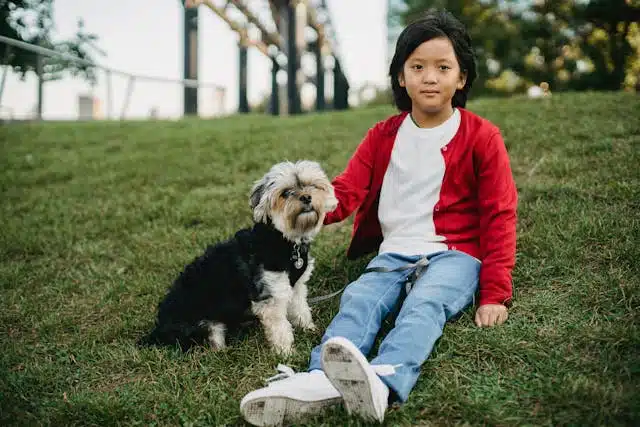
It’s important to build up your dog’s confidence so they can take on new situations and new environments with ease and adaptability. They really look to their pet parent for guidance to know what’s safe and what’s not, and doing confidence-building exercises really helps strengthen that trust in a pet parent. When you’re out and about with your dog, there are several different ways that you can use the outside environment to build confidence.
An example would be going to the playground and tackling the playground equipment, or simply watching other animals and people pass by. These are all ways that you can build confidence in your dog and more trust from your dog to you. Even when you are not out and about in the environment, there are several ways in which you can build the confidence of your dog at home. Think about something they may have never experienced before with you. Especially if it’s a new dog. Maybe they’ve never bathed in a tub before.
So before just tossing them into a bathtub and doing the full bath, take the time to slowly introduce the bathtub to your dog so they can get in and out on their own, maybe have a fun licky mat or frozen kong in the bath to have a positive experience before you actually turn the water on or start with the wash. The idea is to build confidence through these small activities where the dog learns that they can win and they can do it, and they can get in and out of the bathtub on their own, and that does a lot for confidence as well.
4. Implement Proper Socialization
Let’s talk a little bit about socialization. Most people, when they get a new dog or a new puppy, think about socializing them, as in, meeting all these new people and all these other animals, but in fact, socialization is more like social exposure. While it is important to expose your new puppy, or even your adult dog, to new sights and sounds, and smells, the first few weeks are important to limit the amount of physical contact your puppy has with other animals and people in order to begin building that bond between you and your puppy.
Also, make sure they are exposed to a wide variety of different things so they can become familiar with them. Even if you’re bringing home an adult dog and they’re well past their critical socialization period (3 to 21 weeks old) like a puppy would be in, it is still important to expose your dog to new situations, new environments, new people and animals whenever they come their way.
5. Minimize Fearful Experiences
When you get a new puppy or a new dog, one of the things that you want to make sure you’re doing is managing their environment in a way that they’re not going to have a fearful or traumatic experience, and especially with rescue dogs that you don’t know what kind of exposure they’ve had prior, you want to set them up for success by not exposing them to things that could be potentially traumatizing. So what can we do to prevent our puppy or new dog from experiencing fearful and traumatic experiences?
If you notice things like loud sounds tend to startle them, try to keep them away from things that you know are going to make a lot of noise until you can work them up to be more confident and comfortable in those experiences. Definitely avoid flooding. It’s never a good idea to put a puppy or a new dog in an environment with scary things, thinking that they’ll just figure it out or stop being scared after some exposure. Unfortunately, that doesn’t work and can make things a lot worse for your new puppy or your new dog.
So make sure their surroundings and their exposure to other animals, people, sounds, sights, and everything else that is new, so that they feel comfortable and they trust you. Not only do you want to environmentally manage things for your dog to prevent fearful experiences, but you want to think about it on the home front as well.
6. Don't Give Your Dog A Bad Start
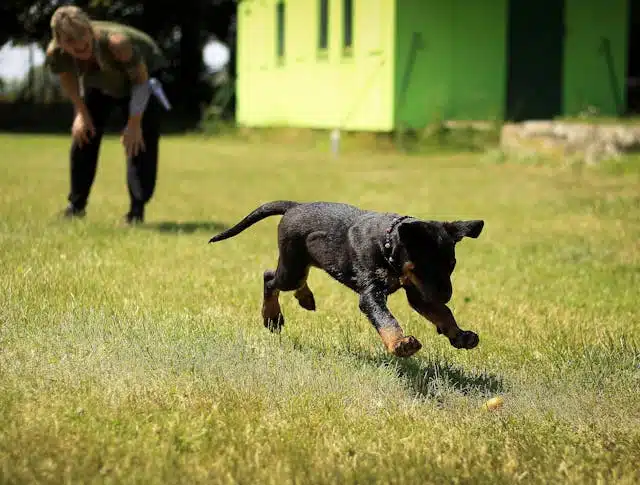
We want to make sure that when we’re training, we create an environment where failures do not occur, and we can reinforce the behaviors we want to see over and over again. As an example of environmental management, if you bring home a new puppy and they are so excited that they chew on everything because they are teething, until they are 6 months old, you should puppy-proof your home by putting things away you don’t want chewed on since they will gravitate toward chewing everything.
You need to watch your puppy 24/7, so you can put a hands-free leash on him or tether him to you, or make sure a set of eyes is always on him so that as he does things you don’t want him to keep doing, you can interrupt and redirect him to something you want him to do. When he’s supervised, you have all these chances to say, “Yeah, I like that behavior!” Yes, do that again.”
7. Keep Breed Traits In Mind

One thing to keep in mind as you have your new dog or your new puppy is breed. Now, breed plays a role because if you think about it, if you have an Australian Shepherd, movement might trigger a response for them.
There are some breeds that are known to be more reactive than others, and some breeds are known to be guardier, and they prefer to be around one person rather than meeting all these new people, so make sure you are aware of your dog’s breed, or maybe know what breeds make up the mixed breed dog you’ve rescued.
These things all play a role in terms of how their personality is going to be outwardly expressed by the people that they’re meeting and the other animals that they’re meeting as well.
8. Carefully Choose Your Dog Trainer
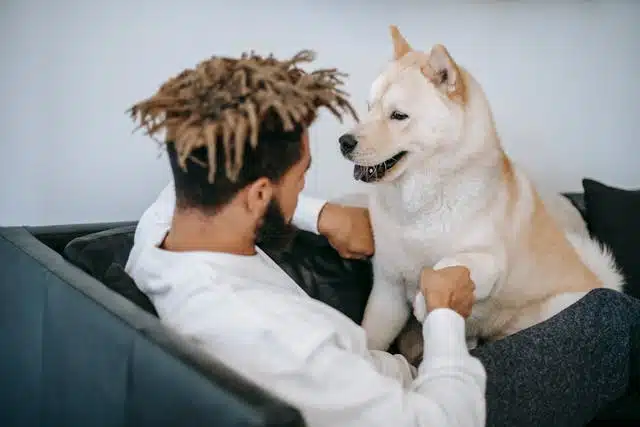
Now we’re going to talk about a hot-button topic, which is choosing a dog trainer. Choosing the wrong professional or having a bad experience with a professional that you don’t vibe with or your dog doesn’t vibe with could be traumatic for your relationship. You can do a number of different things, but the first is finding a credentialed trainer who has the education and experience to train your puppy or dog for you in a positive manner.
There are two credentialing bodies that I look at when I’m selecting a dog trainer for someone, and that’s the IAABC and CCPDT. Next, you should look into their methodology.
Make sure you select a trainer who will look at your dog as an individual and train based on your dog’s likes, dislikes, fears, and behaviors that bring out that happiness so that you know you’re going to build a positive bond while you’re working with your dog and training as well. Each dog has different drives, needs, and desires, so the professional’s job is to tap into these likes and show you how to effectively work with your dog. So be open-minded, and remember, dogs learn in different ways from individual to individual.
9. Puppy Training Tips: Use Play To Your Advantage
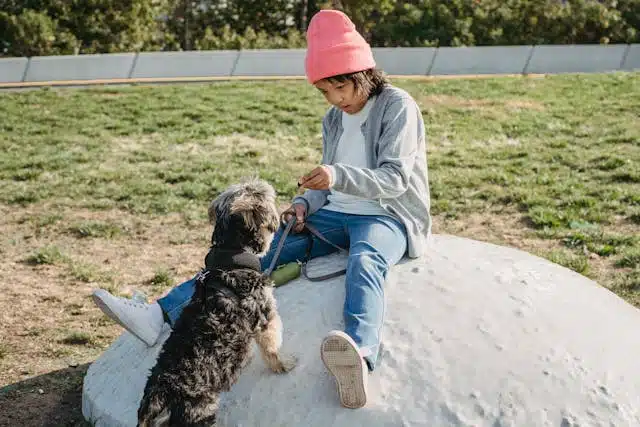
There are a lot of pet parents who overlook the power of play. They will often leave them to play with other dogs or to play with a toy on their own, so you will be missing out on that important engagement that you get from that one-on-one playtime. When you’re out with your dog and they’re playing with you, you’re not stressing them out. Being stressed when you’re playing is hard, and playing when you’re stressed is even harder.
It’s an indicator as to whether your dog is really feeling good and enjoying the experience, or if they’re not playing with you, maybe they’re a little bit concerned or fearful of what’s going on around them.
When you take your dog out in public, if you play with them for a few minutes and they seem very engaged, that might be a good time to try some really simple skills that you’ve been working on, something like sit or down that’s very easy for them to do despite all of the new distractions of the new environment. If your puppy or new dog struggles with that, take a step back, have more fun playing and observing, and make sure that your dog or puppy and be sure they’re relaxed before you start asking for different skills.
10. Build A Predictable Routine
My last tip for you is about building a predictable routine. Normally, dogs are extremely routine-oriented, and they look forward to their day’s activities as they happen. However, I want to note that it’s not just about doing things at this time of day and doing them at that time. Part of building a routine is the expectation for your dog to know what type of activities happen and when.
So, for example, if you get up and you go for a walk in the morning with your dog and they’re used to that physical activity, but then you come home and you have your coffee and your dog just hangs out with you, build that on a daily basis to where the dog knows what to expect.
They know when it’s time to have that physical activity and that walk with you, and then they can turn it off right after that physical activity because you want to relax and have your coffee. Switching it up to have your coffee first, relax, and then go for a walk can confuse your dog a little bit, and that can sometimes lead to a little bit of stress.
For example, you might create this routine with your puppy before taking him out of his crate. And every time you take your puppy out, we go right outside and we go potty. That’s a great starting point for potty training. But what happens that one time that you open that crate door and you don’t immediately take your puppy outside to potty? Now they go potty on the floor, and you’re starting to build a habit that you don’t want to build.
If you are having trouble training your dog, ask a professional first, whether they are dog behaviorists or dog trainers. In most cases, behavior problems are caused by discomfort or pain. It’s actually really common. So if your dog is off or struggling and the two of you aren’t clicking with training, not only seek help from a dog professional But you should also take your pet to the vet for a physical checkup to make sure there’s no pain.
When we’re thinking about dog training, try not to get hung up on the word training itself because that makes us think about only things like sit, down, and heel and all of those obedience cues, but what it’s really about is actually learning to live with another partner. Having a new furry family member means that you and they need to learn how to live together in a positive and healthy way.
